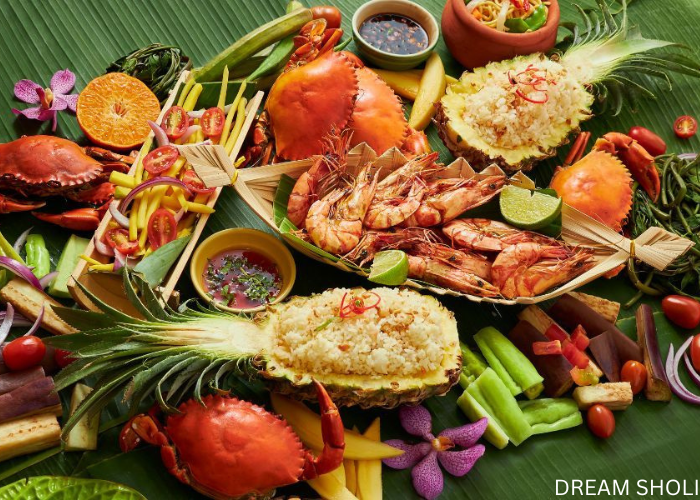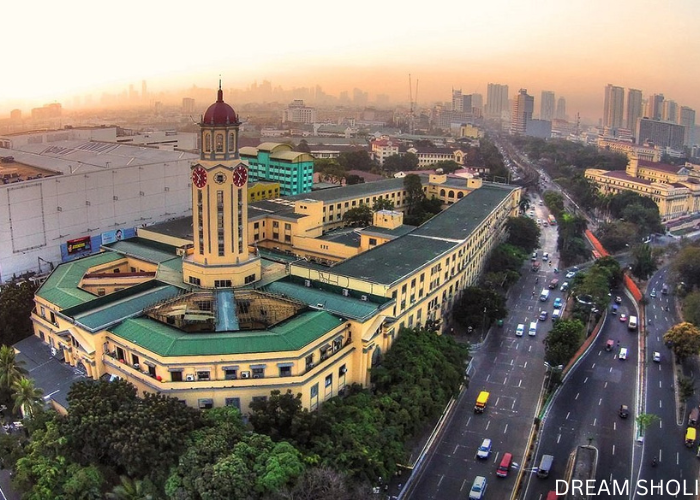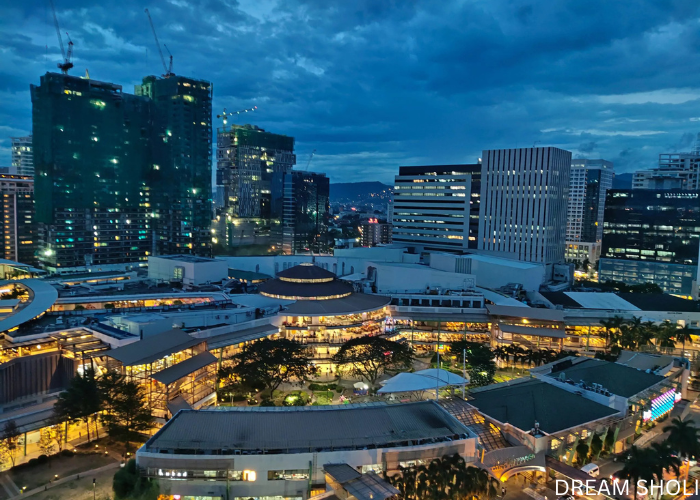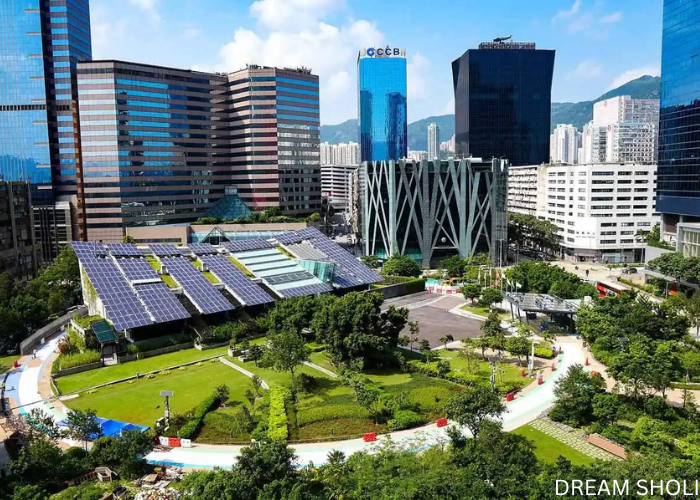
The Philippines, a stunning Southeast Asian nation, is celebrated for its beautiful landscapes, warm hospitality, and rich cultural diversity. Comprising over 7,000 islands, the Philippines offers an impressive range of scenery—from pristine white sand beaches and clear turquoise waters to lush green rice terraces and bustling, colorful cities. Filipino cuisine is a delightful blend of flavors, influenced by Malay, Chinese, and Spanish culinary traditions, featuring unique dishes like adobo, lechon, and sinigang. The country is home to numerous historical and cultural treasures, with well-preserved colonial architecture, ancient artifacts, and vibrant festivals such as Sinulog and Ati-Atihan that showcase its deep-rooted cultural heritage. Whether travelers wish to dive into the vibrant marine life of Palawan, trek through the breathtaking Banaue rice terraces, or immerse themselves in the lively atmosphere of Manila, the Philippines offers a diverse range of experiences. From adventure and natural wonders to history and hospitality, the Philippines has something to enchant every type of traveller.
The Philippines, with its tropical climate, enjoys warm, humid weather throughout the year, making it a popular destination for beach lovers and nature enthusiasts. The climate is mainly divided into two seasons: the dry season, from December to May, and the wet season, from June to November. The dry season is marked by clear skies, comfortable warmth, and ideal beach conditions, making it peak travel time for many visitors. The wet season, on the other hand, brings heavier rainfall, with typhoons commonly occurring between July and October, especially in northern and central regions. Across most of the country, temperatures typically range from 25°C to 32°C but can feel warmer due to the high humidity levels. Cooler temperatures can be found in higher-altitude areas like Baguio and the Cordilleras, which offer a refreshing escape from the lowland heat. To fully enjoy your trip, it’s best to check the regional weather forecast before you go, ensuring you’re well-prepared for the conditions specific to the area and season of your visit.

Culturally, the Philippines is a colorful mosaic of indigenous traditions and foreign influences, woven together over centuries. The lively Filipino spirit shines brightest during traditional festivals, such as Sinulog, Ati-Atihan, and Pahiyas, where locals don vibrant costumes, dance in the streets, and celebrate with elaborate parades. Traditional dances like tinikling involving quick, intricate footwork between bamboo poles—and the concept of bayanihan, or community unity and support, reveal the enduring strength of Filipino identity. Known worldwide for their warmth and hospitality, Filipinos place immense value on family ties, community solidarity, and resilience, qualities that anchor their welcoming nature and positive outlook, even in challenging times. The Philippines boasts an incredibly diverse and flavorful cuisine that reflects the nation’s unique cultural heritage. Filipino dishes are a delightful fusion of Chinese, Malay, and Spanish influences, each adding its own touch to the vibrant Filipino palette. Signature dishes include adobo, a savory and tangy stew typically made with chicken or pork; sinigang, a comforting sour soup often prepared with tamarind; lechon, a crispy, flavorful roast pig and centerpiece of festive occasions; and halo-halo, a refreshing layered dessert of shaved ice, sweet beans, jellies, and tropical fruits topped with creamy flan.


Manila, the dynamic capital of the Philippines, is a city where rich history and modern life converge, creating a unique urban tapestry. Known for its vibrant street markets, bustling energy, and deep cultural heritage, Manila offers visitors an experience that combines contemporary urban living with historic charm. The cityscape is a fascinating mix, with Spanish colonial landmarks alongside towering modern skyscrapers. Intramuros, the walled city that once served as the Spanish colonial hub, provides a glimpse into Manila’s past, with its cobblestone streets, centuries-old churches, and historical forts. Other cultural landmarks, like Rizal Park and the National Museum, showcase the nation’s artistic and historical legacy, inviting visitors to explore the depth of Filipino culture. As the primary gateway to the Philippines, Ninoy Aquino International Airport is Manila’s major airport, connecting the capital with numerous international destinations. NAIA, which operates across four terminals, handles both domestic and international flights, linking Manila to cities across Asia, the Americas, the Middle East, and beyond. Although the airport faces challenges with infrastructure and congestion, ongoing efforts aim to enhance its facilities and services, improving the experience for travelers arriving in or departing from Manila. These upgrades reflect a commitment to welcoming tourists and making travel to this exciting, multifaceted city smoother and more enjoyable


Cebu City, a bustling metropolis in the Philippines, is celebrated for its rich history, beautiful beaches, and vibrant cultural scene. Known as the “Queen City of the South,” Cebu City combines the energy of urban life with stunning natural attractions, making it a favourite destination among locals and international visitors alike. The city’s historical sites, such as Magellan’s Cross and Fort San Pedro, offer insights into Cebu’s Spanish colonial past, while its thriving markets, lively festivals, and coastal scenery showcase the region’s dynamic culture and laid-back lifestyle. Just a short drive away, Mactan Island presents pristine beaches and crystal-clear waters, providing a picturesque retreat for relaxation, water sports, and world-class diving. Cebu City is serviced by Mactan-Cebu International Airport, the second-busiest airport in the Philippines. This modern facility is a key gateway for travelers exploring the central Philippines, connecting Cebu to a range of domestic and international destinations. Located conveniently on Mactan Island, the airport is equipped with advanced amenities and a welcoming design, ensuring travelers a seamless experience. The airport’s role in facilitating travel to and from Cebu City makes it a crucial part of the city’s infrastructure, supporting Cebu’s status as a major tourist hub and gateway to the Visayas region.
Clark, a vibrant and rapidly developing city in the Philippines, is renowned for its economic advancements, diverse entertainment offerings, and scenic proximity to Mount Pinatubo. This dynamic city provides visitors with a wealth of activities, from high-end shopping and dining at the Clark Freeport Zone to immersive cultural experiences at Nayong Pilipino Clark and the eco-friendly Paradise Ranch, which showcases the beauty of Filipino nature and wildlife. Clark’s ideal location near Angeles City and the iconic Mount Pinatubo caters to both leisure and business travelers, making it an attractive, multi-faceted destination for various interests. Clark is efficiently served by Clark International Airport, a key aviation hub on the island of Luzon. With its strategic positioning and modern facilities, the airport enhances Clark’s connectivity, offering an array of both domestic and international flights that link travelers to prominent destinations worldwide. Clark International Airport’s state-of-the-art infrastructure supports a smooth travel experience, which, in turn, contributes significantly to the city’s accessibility and appeal as a prime gateway in the region.


Explore the world effortlessly with our tailored travel packages. Let us handle the details while you create unforgettable memories.
Copyright 2024 Dream Sholi